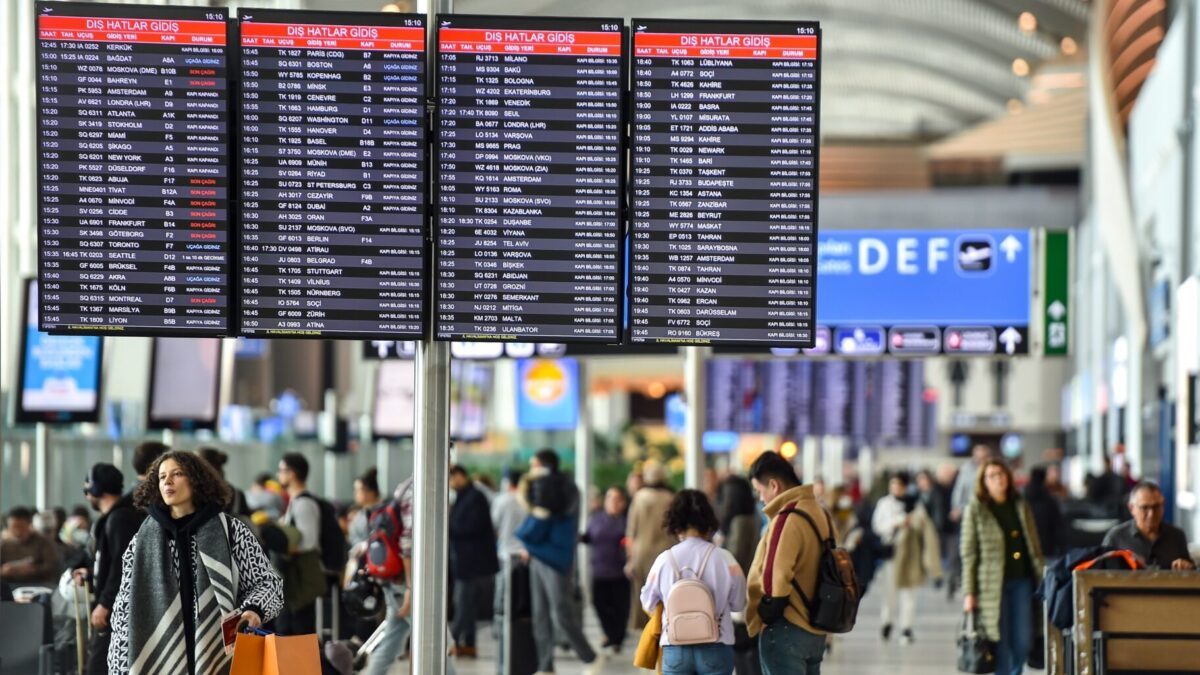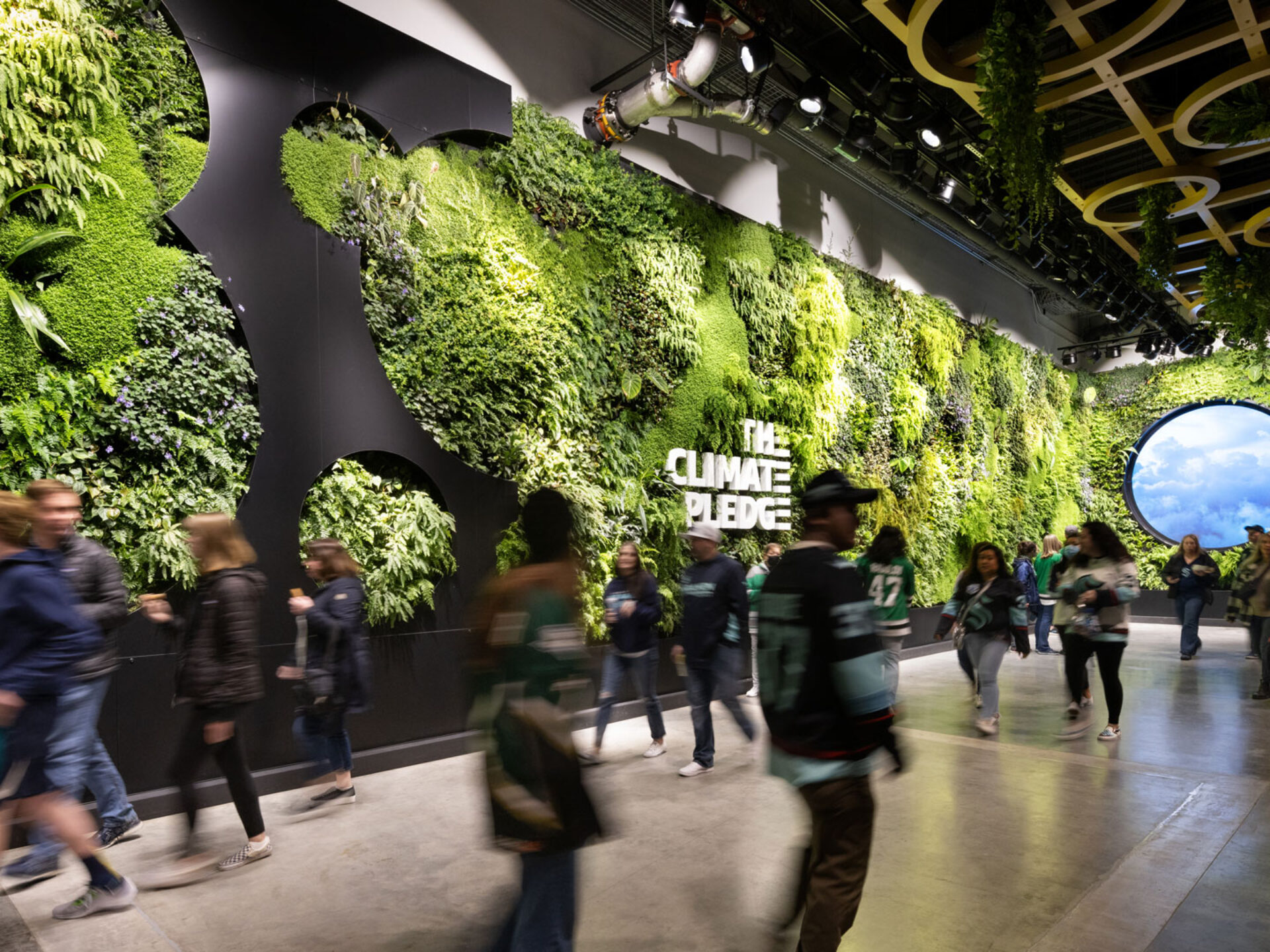Perspectives

July 17, 2023

One of the biggest drivers for airports is how these infrastructures of connectivity reduce their negative environmental impact on our planet.
In our fifth aviation news article our Aviation & Transport Lead AU/NZ, Pedro Villanueva, with colleague, APAC Sustainability Lead Kavita Gonsalves break down how these aspects can be factored into the design of airports.
The aviation industry is progressively adjusting their discourse to the ‘net zero carbon emissions by 2050’ objective. An example of this adjustment is that airlines are making concerted efforts to reduce fuel emissions that currently account for over 90% of the overall aviation carbon footprint.
“Within the built environment, airports are committing to earlier dates for carbon-neutral objectives for gas and energy emissions.
“Populous recognises that airports are incredibly important pieces of social infrastructure and catalysts for urban redevelopment and regeneration, like Populous-designed major venues Climate Pledge Arena, Seattle and Kai Tak Sports Park, Hong Kong. To ensure that airports are meeting their carbon-neutral targets, they need to consider utilisation, materiality, interconnectivity, and vision,” Villanueva said.
The first aspect is to consider how the potential of existing real estate can be unlocked and thereby, build up utilisation of what is there.
As explained by Villanueva, “We mentioned in a previous post Kansai International Airport, Populous’ design on this project is increasing the use capacity by over 30% by using the same floor plate.”
Gonsalves adds, “Co-design engagement of communities presents avenues for placing airports into the hearts of the communities as seen in our work with Wiigulga Sports Complex.
“Community engagement is a key insight that we draw on from our past stadium, arena, and convention centre designs: the more a project is weaved into the social fabric of the city, the more it is valued and used,” she said.
The second aspect is the climate-responsive approach to planning and designing airports ensuring that the spaces and buildings are designed considering the climatic conditions of the place.
Villanueva explains, “The use of passive design principles to achieve thermal comfort such as building orientation, careful planning (for example, service and storage spaces in locations that need to block the hot sun), taking advantage of breezes and minimising heat gain and loss with material choices and landscaping opportunities.
“Mixed ventilation systems are to be considered when human thermal comfort cannot be achieved successfully through passive design principles,” he said.
The third aspect in the sustainable design journey of airports is the building materials of airports.
Material selection presents opportunities for local construction and locally sourced materials which in turn represent the architectural identity of the buildings that go on to create genuine and authentic airports that reflect a city’s community and culture.
“Materiality strategies can include calculating embodied and operating carbon calculations that will invariably drive materiality choices such as eco-concrete, recyclable finishes, local material choices and adaptive reuse of building components,” Gonsalves said.
The next aspect is to consider is interconnectivity between the airports and other modes of transport (such as public transport) is key to the experience journey of a passenger between their destinations.
“Driving this need for interconnectivity is the passenger’s choice of sustainable transport choices such as trains, bikes and buses to minimise their carbon footprint once off an aeroplane. Thus, airports are key transport hubs that are part of a city’s greater travel connectivity,” Villanueva said.
And finally, one must remember that the airport is the “welcome face” of a country: to its residents and visitors.
“Too often designing and building an airport is an enormous undertaking to plan and build a new airport where we address the question, “how can we really affect change as the billboard to a city or to a country even?”
“At Populous, we take on this exciting and forward-thinking challenge and we support our clients in building a vision to make thoughtful and eco-conscious airports,” Villanueva explains.
Gonsalves adds, “Climate Pledge Arena is an example of Populous vision-building with visionaries and leaders where it is poised to be the world’s first arena to earn a net zero carbon certification from the International Living Future Institute,” she said.
“Thanks again to everyone we met and chatted with at PTE 2023 and ACI Asia-Pacific Regional Assembly among others. We look forward to future discussions as the aviation industry evolves and grows back stronger. People love coming together, they want to explore and experience their world, so it’s an exciting and rewarding time to be working in aviation and transport projects around the globe,” Villanueva said.
We hope you’re finding our thoughts on future trends and our reflections from previous conferences, roundtables and discussions a useful start to your own planning conversations. Thanks also for the DM’s and comments we’ve received so far. If you’d like to get in touch, please comment or DM, Pedro Villanueva, Ben Dawson, Geoffrey Ax or Kavita Gonsalves on LinkedIn.
Lorem ipsum dolor sit amet consectetur, adipisicing elit. Non facere corporis et expedita sit nam amet aut necessitatibus at dolore enim quis impedit eius libero, harum tempore laboriosam dolor cumque.
Lorem, ipsum dolor sit amet consectetur adipisicing elit. Illo temporibus vero veritatis eveniet, placeat dolorem sunt at provident tenetur omnis, dicta exercitationem. Expedita quod aspernatur molestias eum? Totam, incidunt quos.